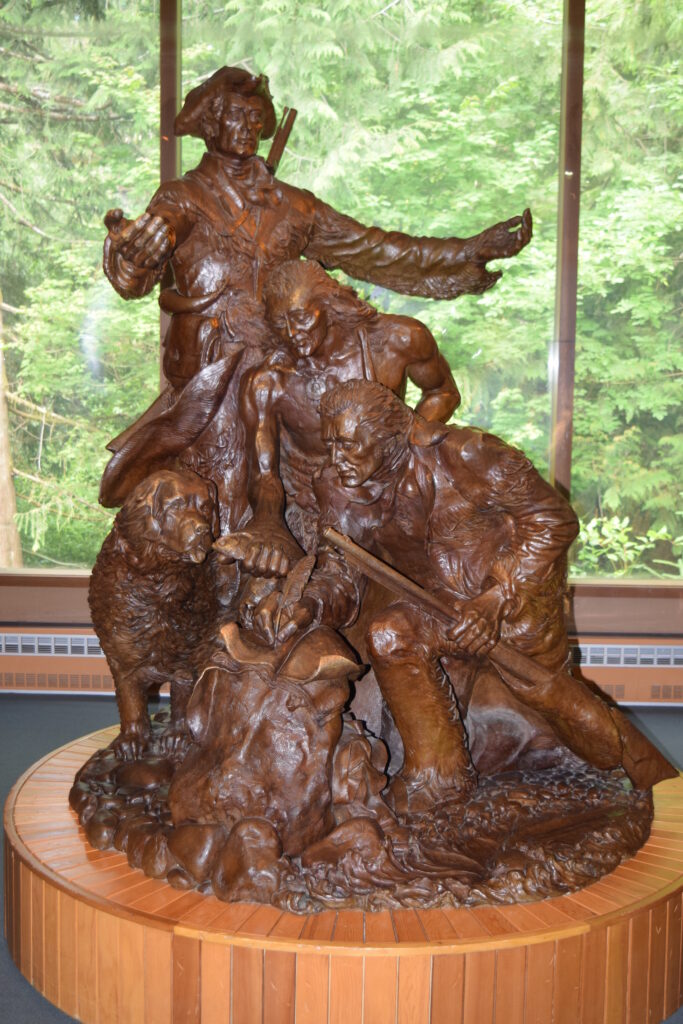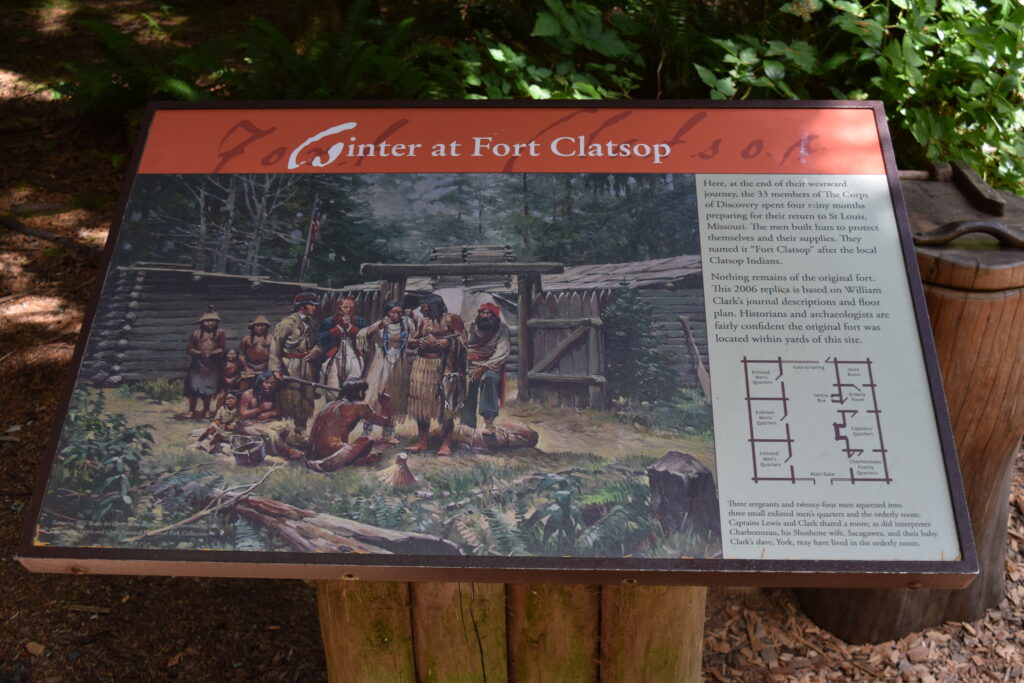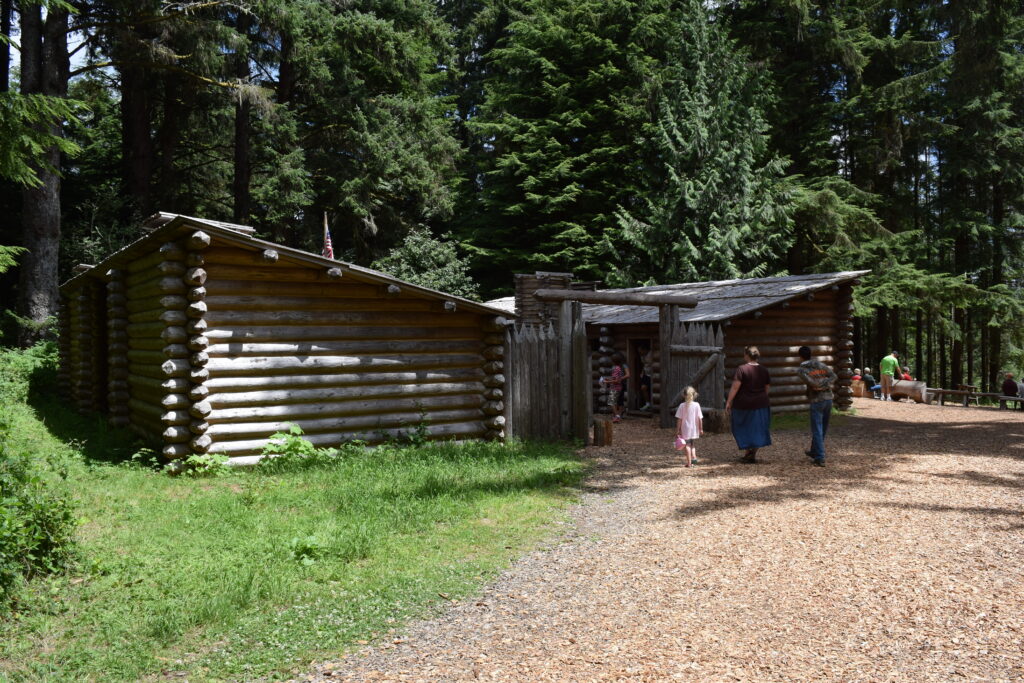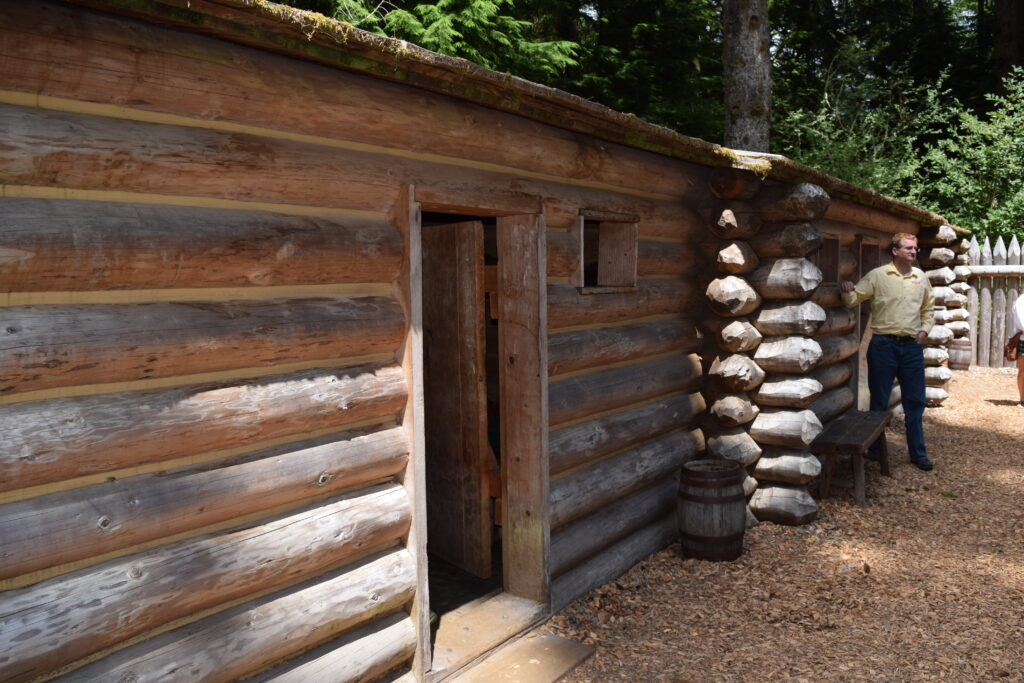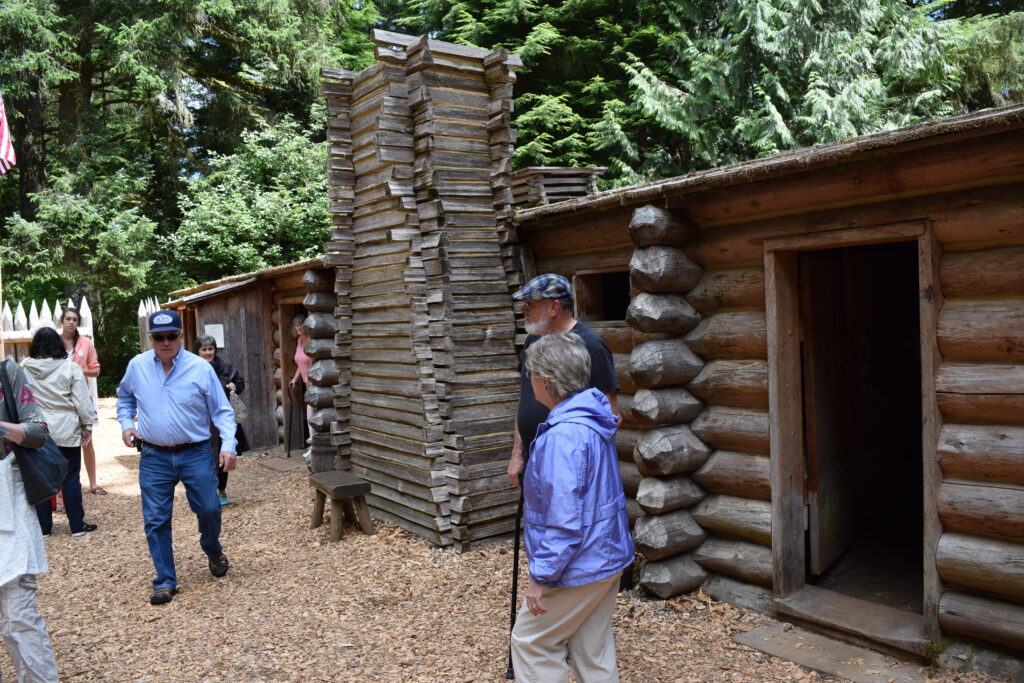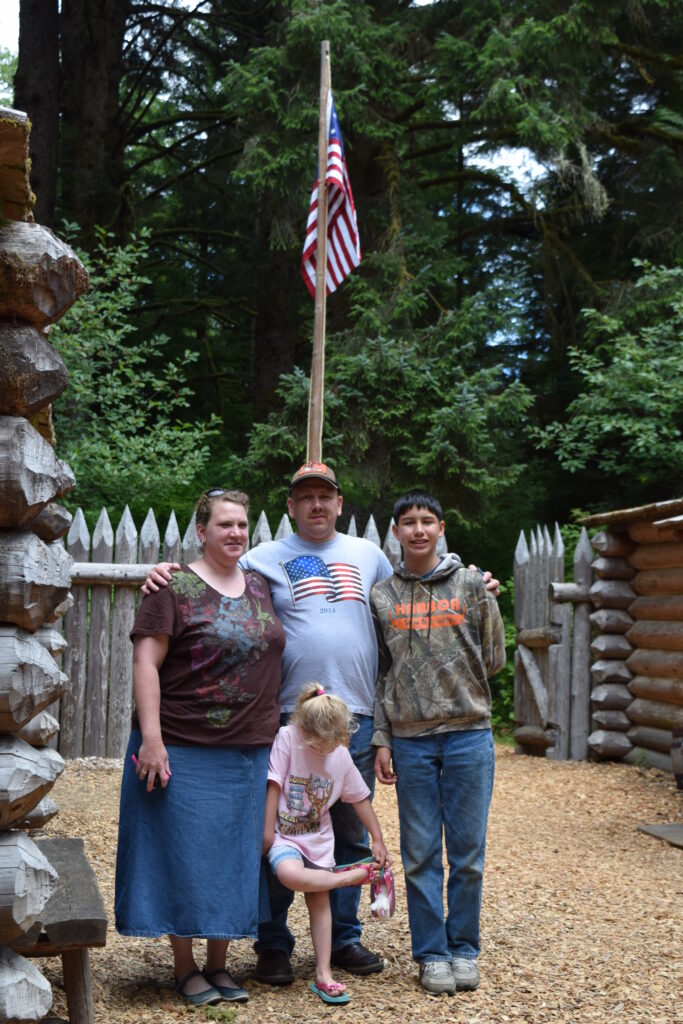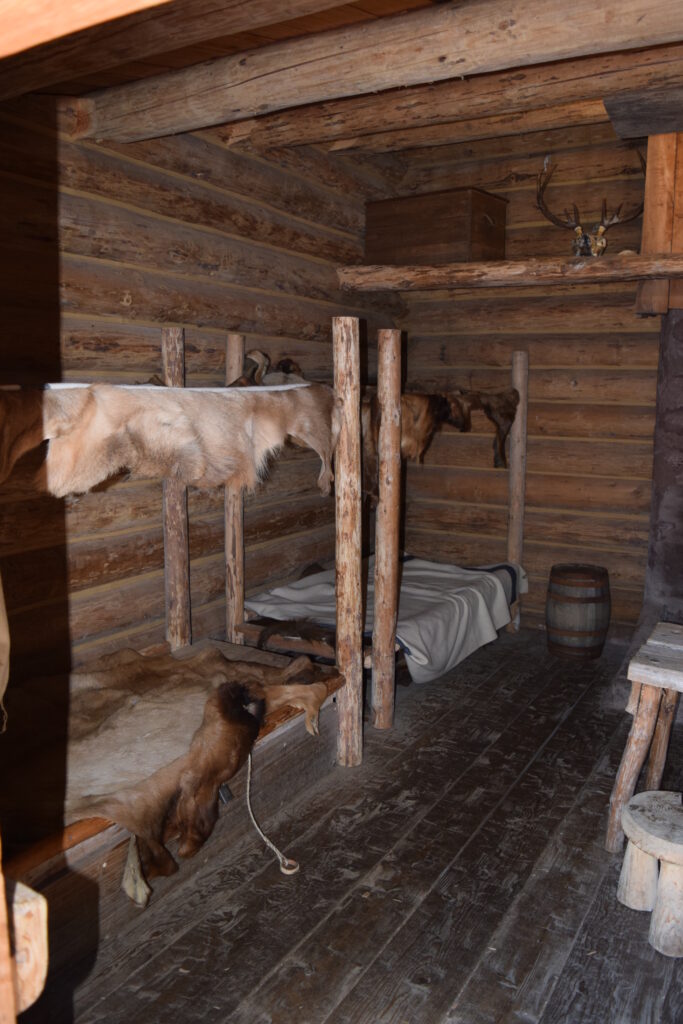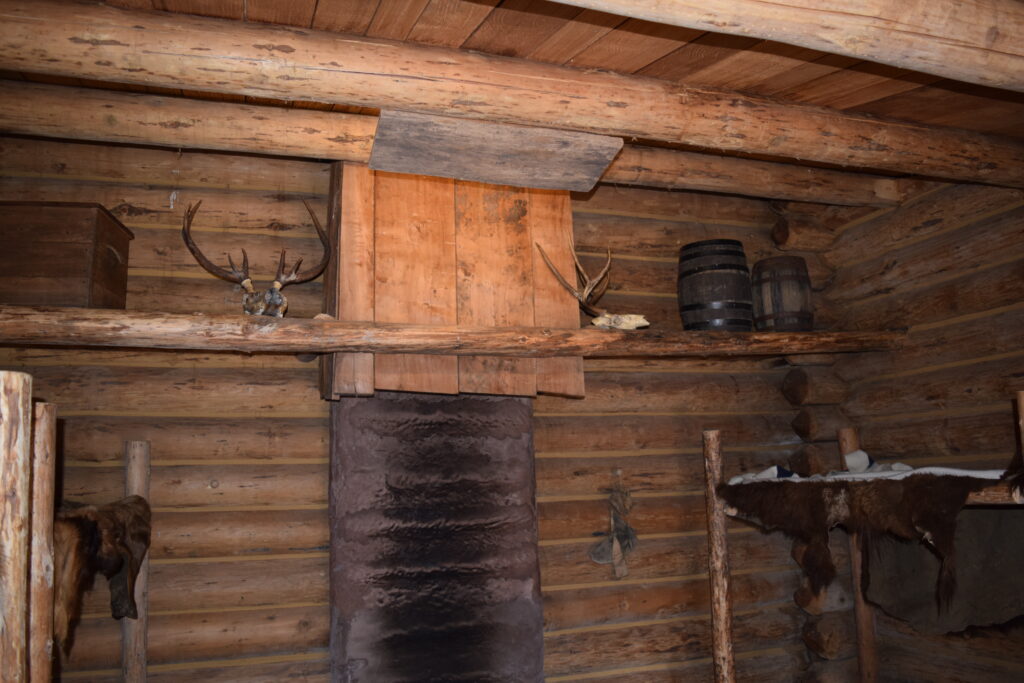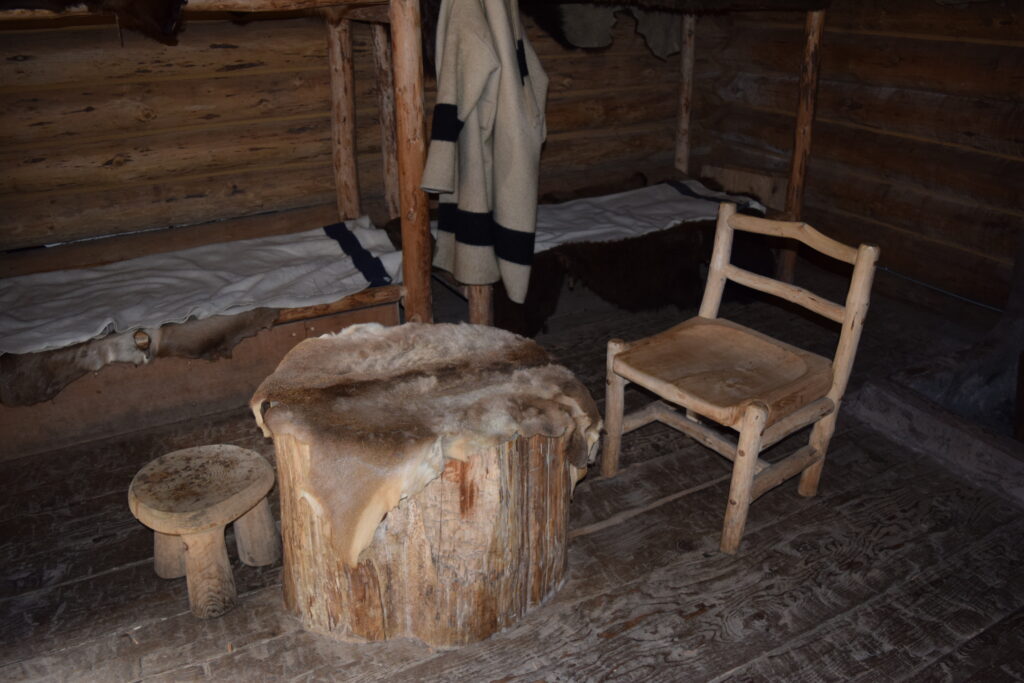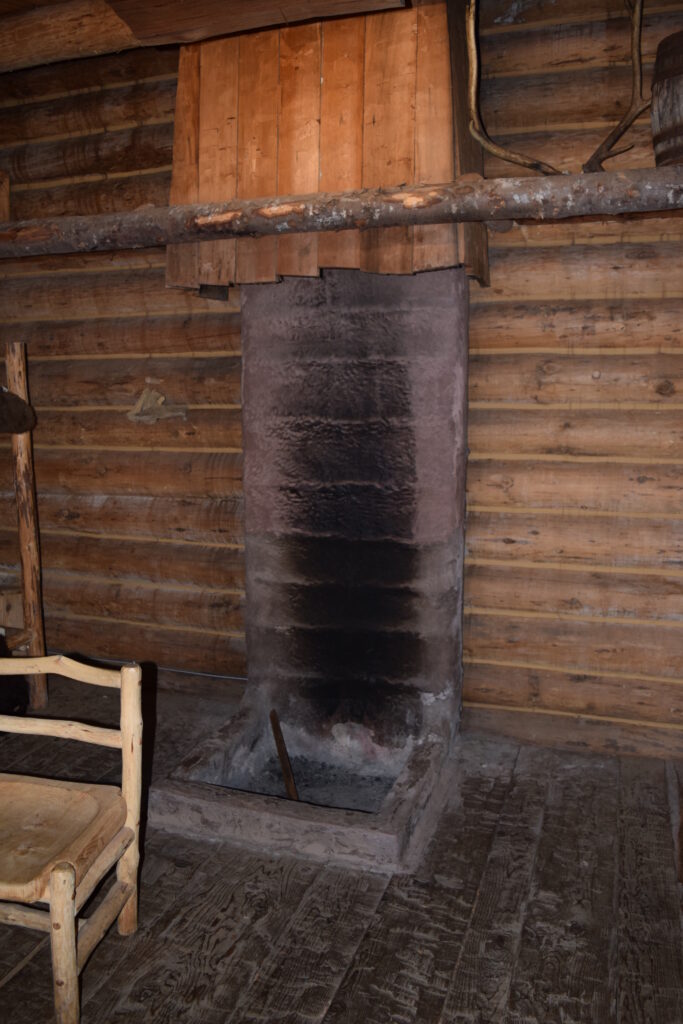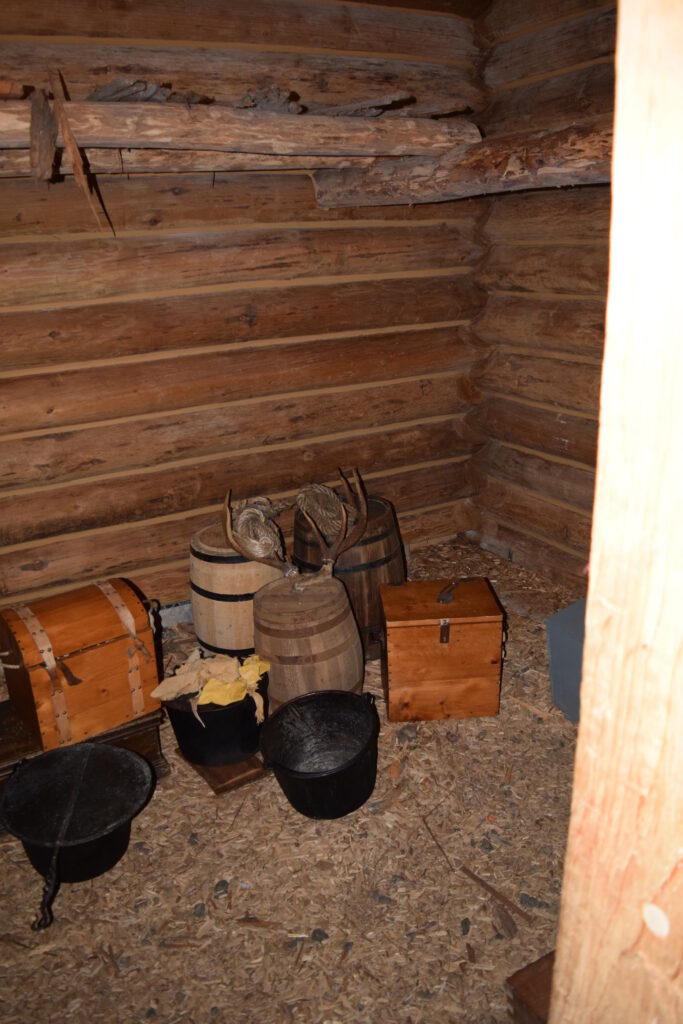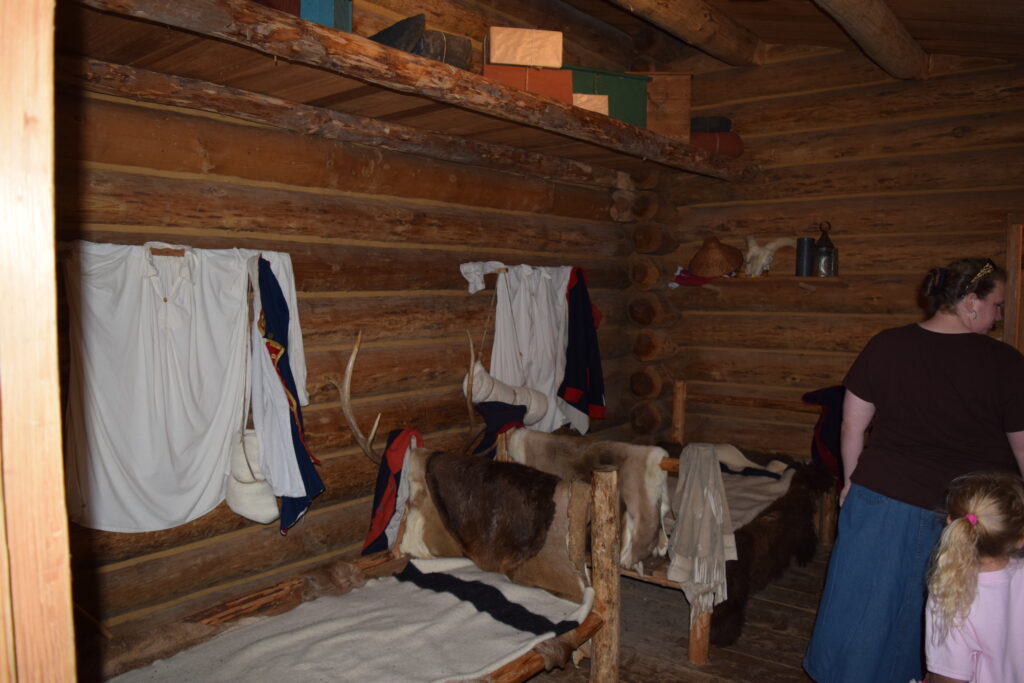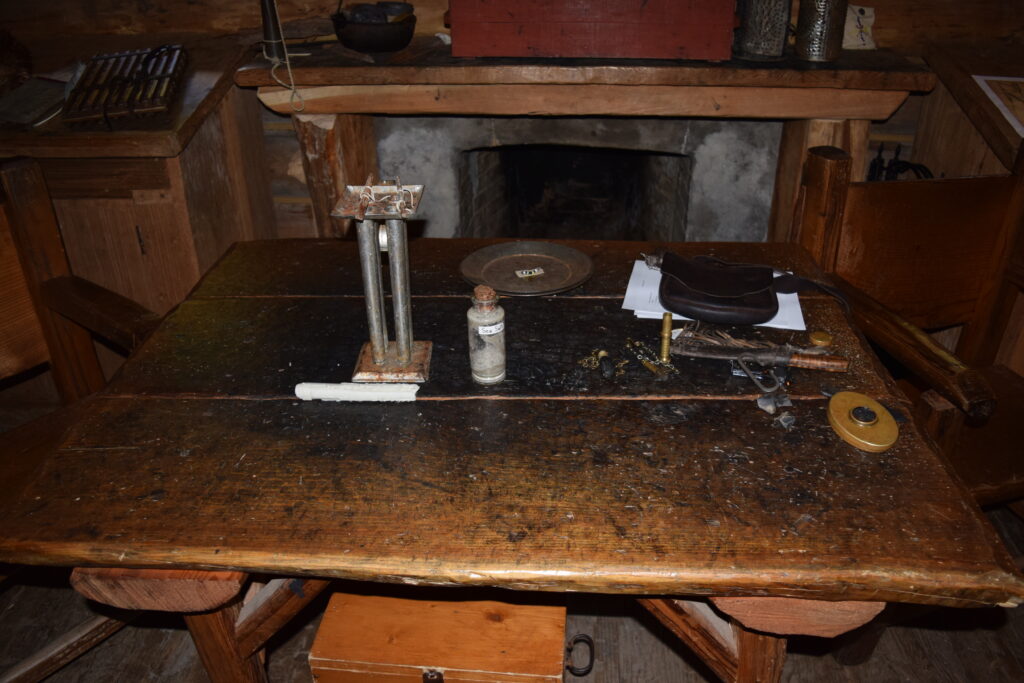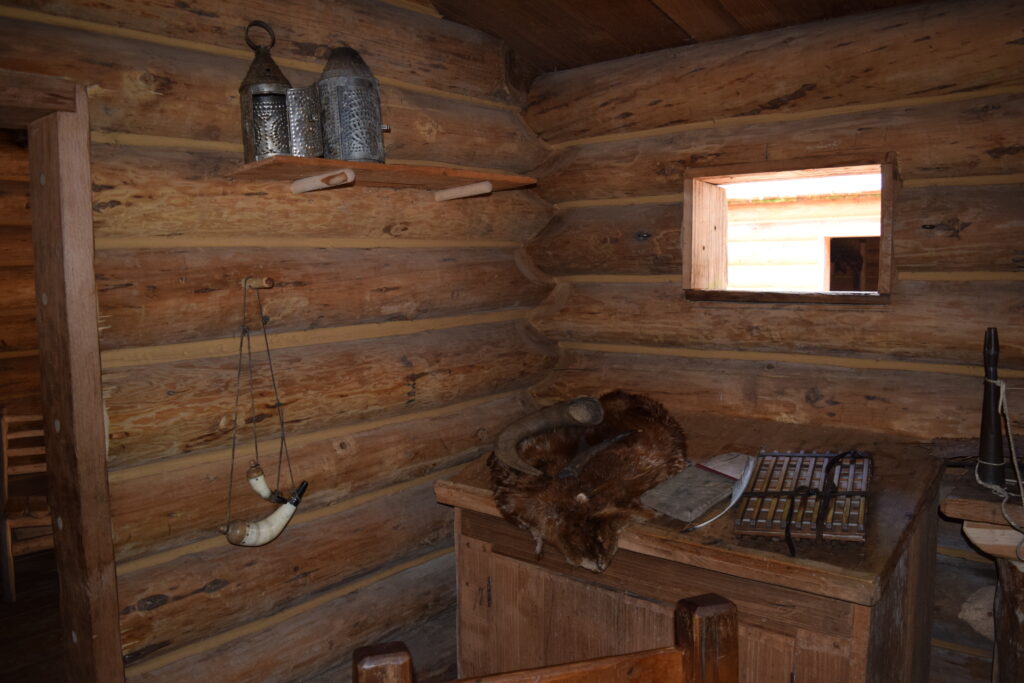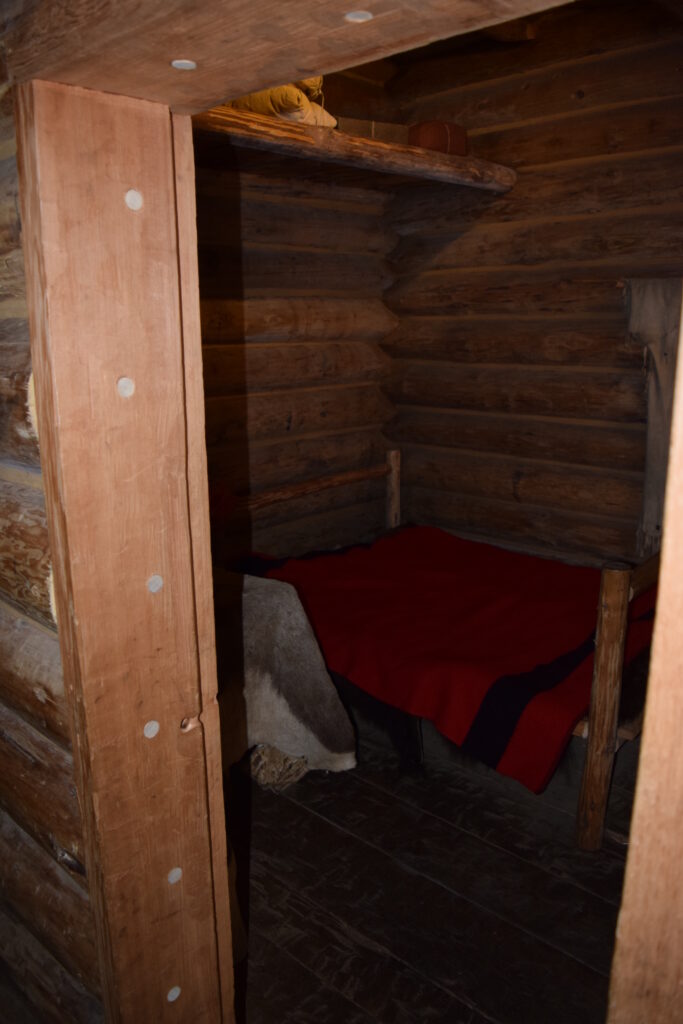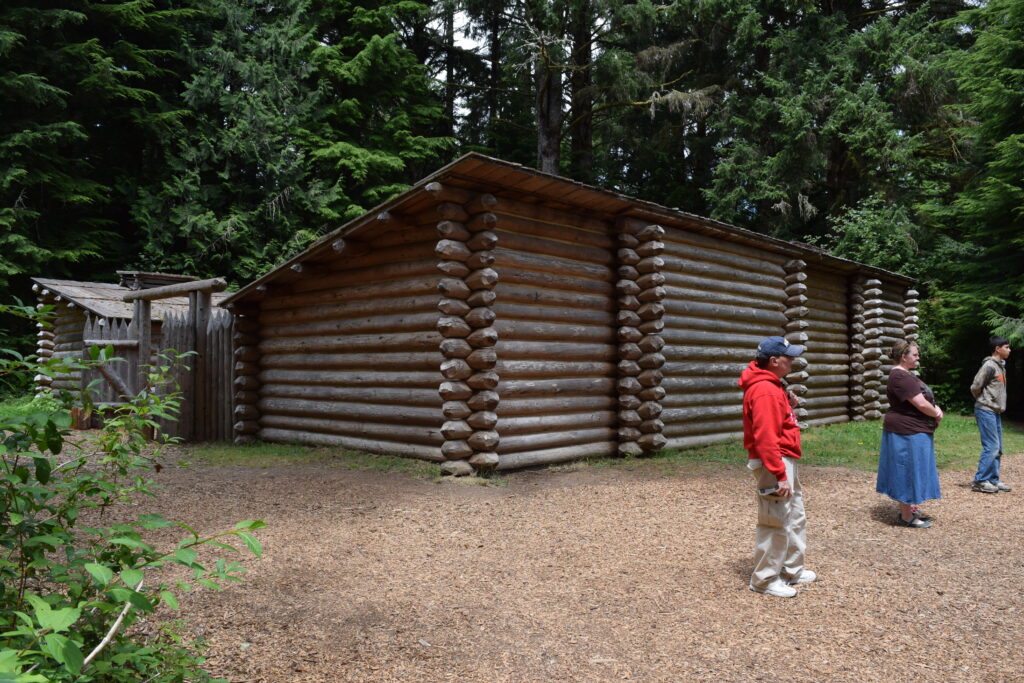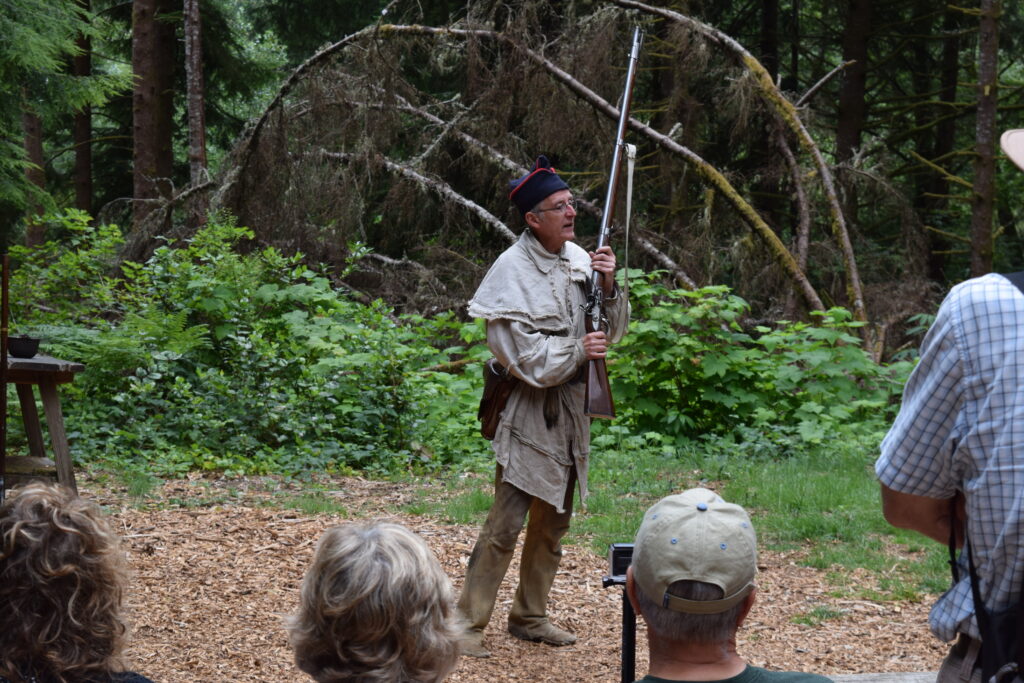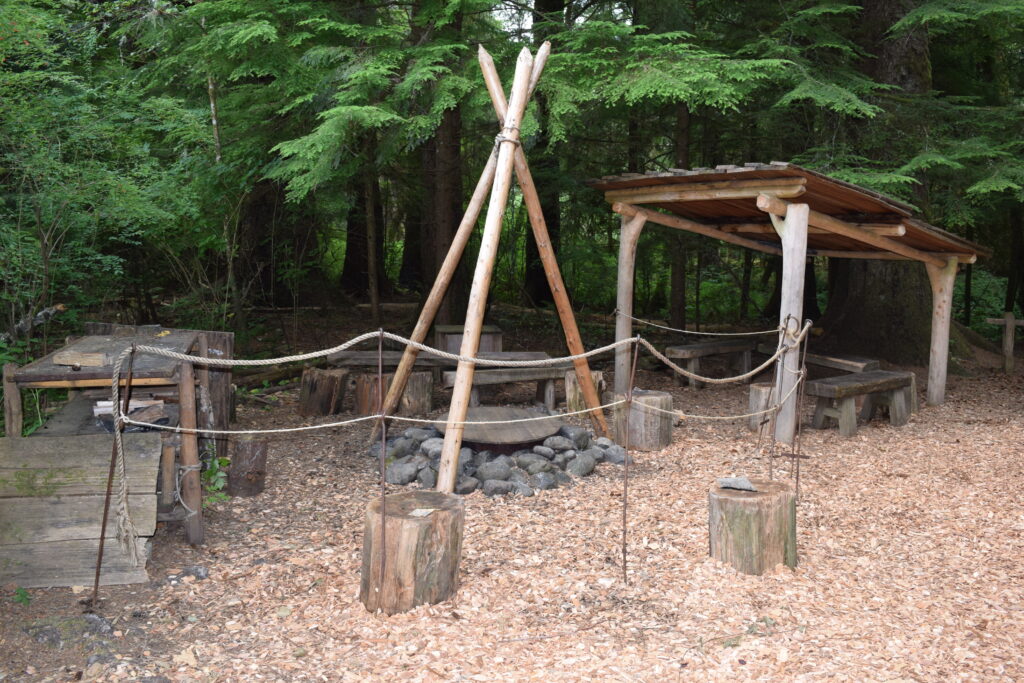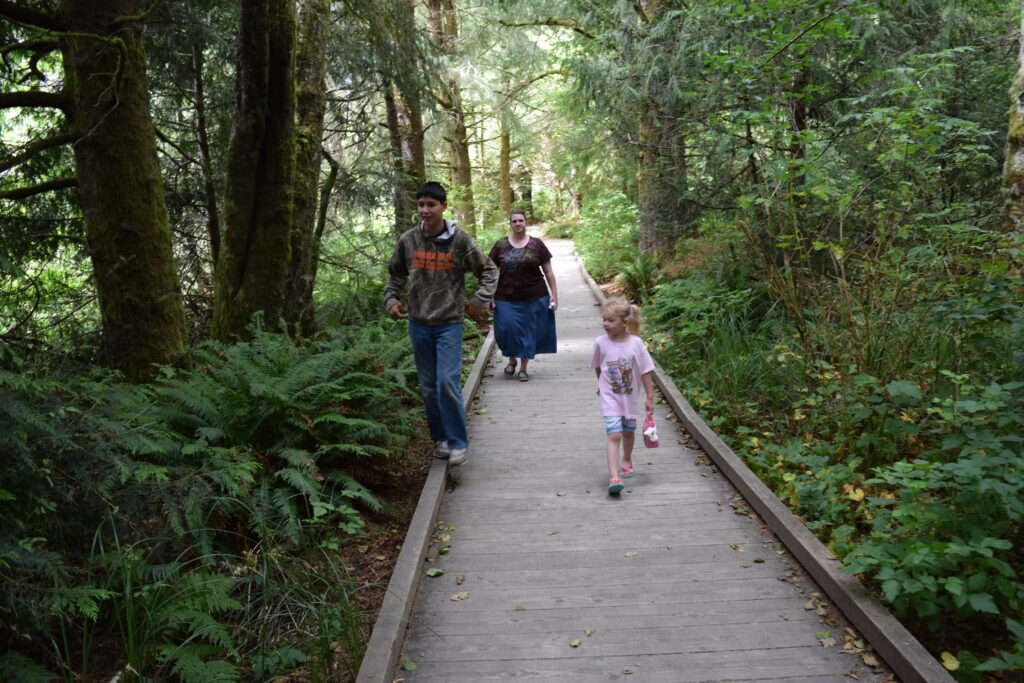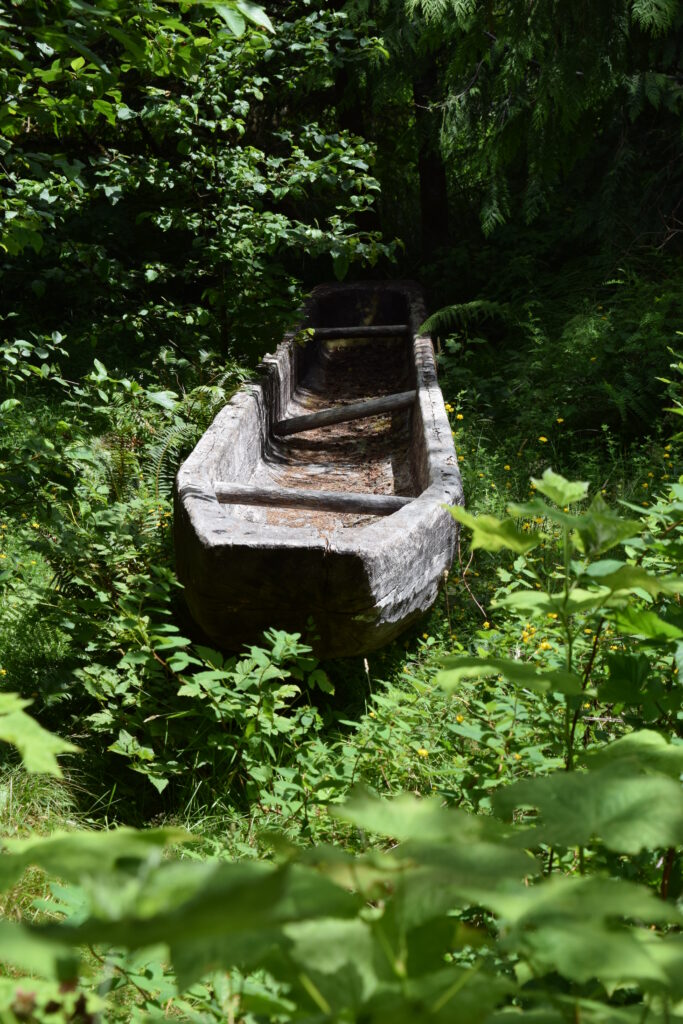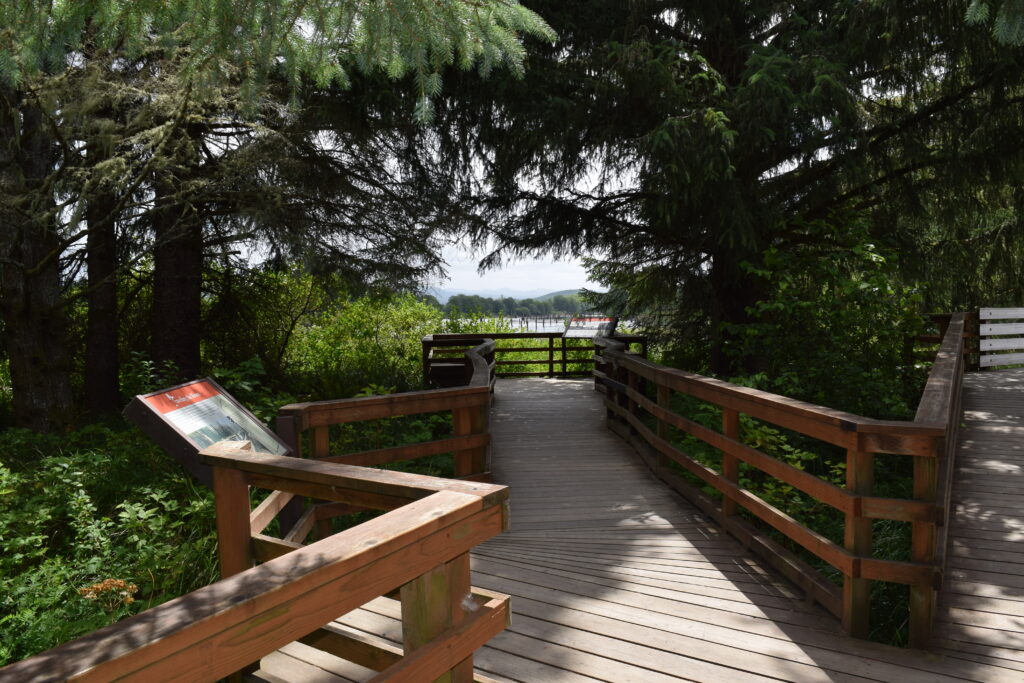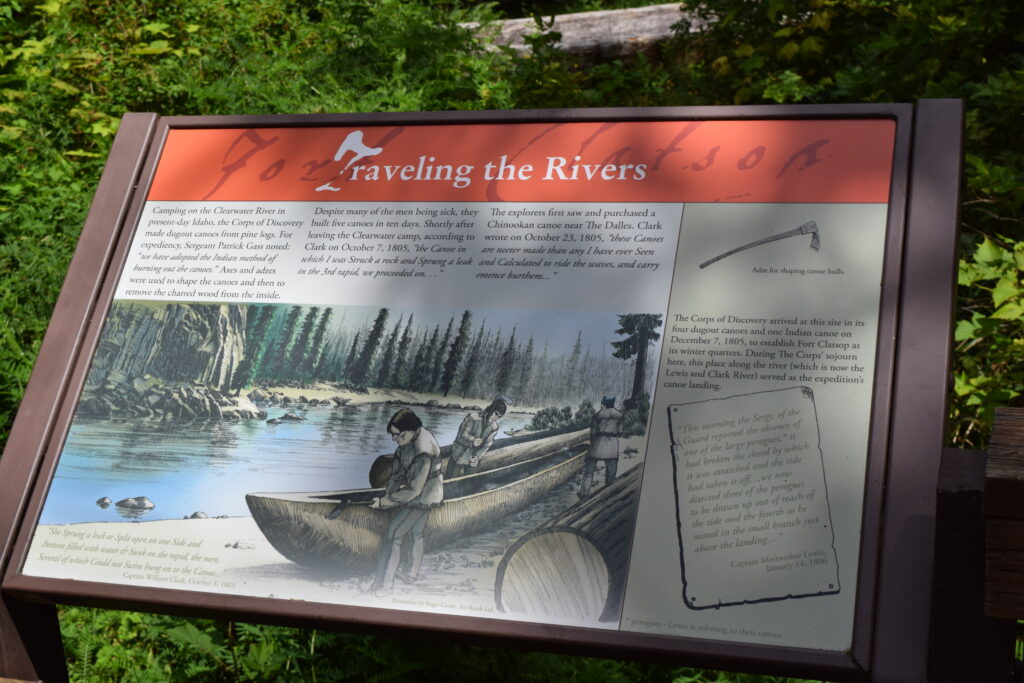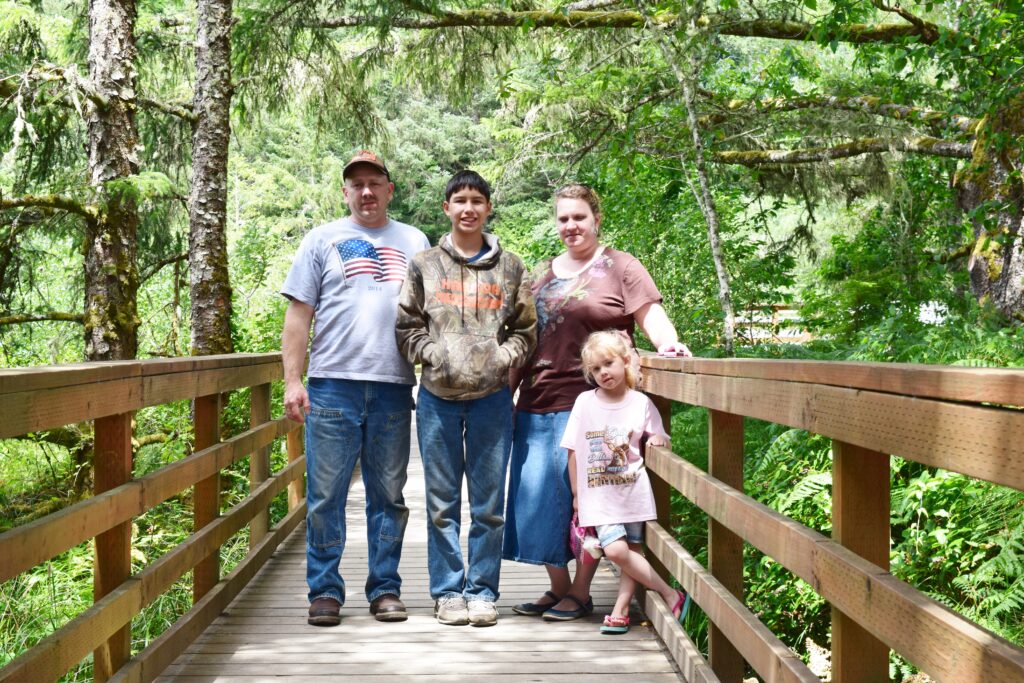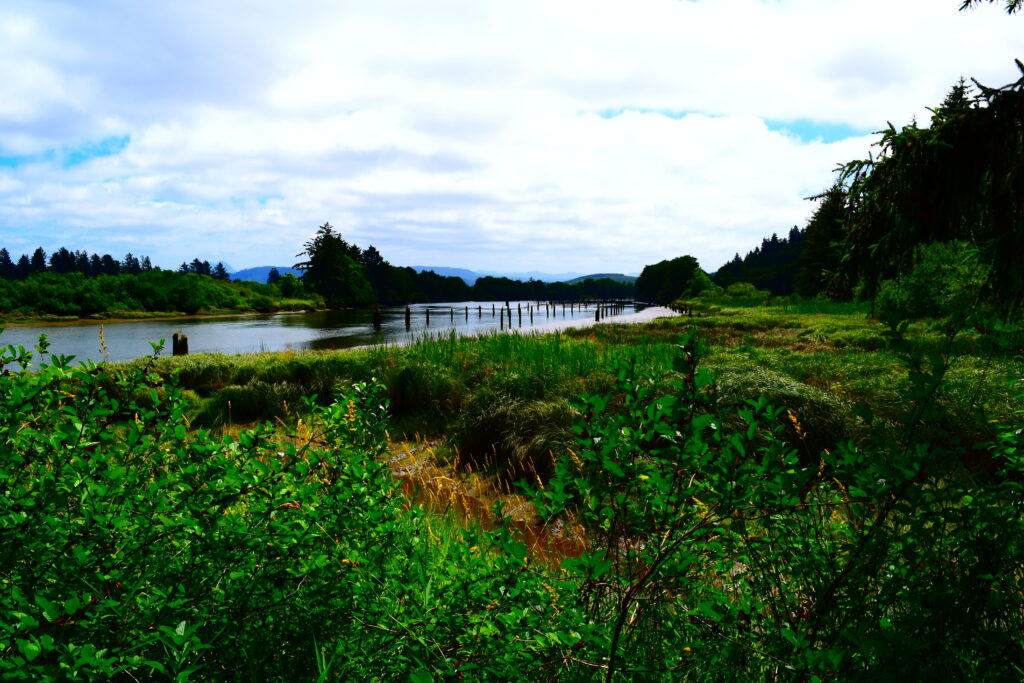Fort Clatsop
We also enjoy learning about local history during our travels so we will stop at various historical places along the route if they are not too crowded. We like history, not crowds. One stop was at Fort Clatsop outside of Astoria Oregon. Fort Clatsop is a recreated fort that was part of the Lewis and Clark National Historic Trail. It wasn’t overly crowded so we took the self-guided tour. Fort Stevens is also a nearby trip that is well worth stopping at if you like war history and can time the stop with a day when they open up several underground sections of the fort along with having people there recreating the scenes of what life was like there during its operation. This is also one of the only 5 times that we actually used our camp trailer at an RV park too.
The history of Fort Clatsop reads, “On December 7, 1805, the expedition encamped at the site they selected for their winter quarters. It was desirable for the availability of game, proximity to the ocean for salt-making, and moderate temperatures. Clark sketched a preliminary site plan of two parallel rows of cabins joined by gated palisades on either end. But with construction well under way on December 13, the design had clearly been altered. Ordway wrote, “we raised another line of our huts and began the last line of our huts forming three [sides of a] Square and 7 rooms 16 by 18 feet large. the other Square we intend to picket and have gates at the 2 corners, So as to have it a defensive fort.” Fort Clatsop was completed by January 1, 1806. When the expedition finally departed on March 23, 1806, Whitehouse wrote a parting description: “Fort Clatsop is situated on the South side of Columbia River, and about 1½ Miles up a small River […] and lay a small distance back, from the West bank of said River. The fort was built in the form of an oblong Square, & the front of it facing the River, was picketed in, & had a Gate on the North & one on the South side of it.”
After 1806, Fort Clatsop gradually diminished through natural deterioration and active removal. By the 1850s, all surface traces had disappeared. Later efforts to verify the fort’s site culminated in archeological excavations in 1948. A reconstruction of the fort, based on Clark’s unrealized sketch, was completed in 1955. The site was designated the Fort Clatsop National Memorial in 1956, and then the Lewis and Clark National Historical Park in 2004. The 1955 reconstruction burned down in 2005; a replacement was completed in 2006.
The visitor center incorporates a small museum that has some interesting historical items and stories in it as well as a couple films and a wooden carving depicting Lewis and Clark. The admission costs were not too high so we went ahead and bought admission for the four of us so we could tour the replica of the original fort and surrounding area. There were also demonstrations of how life was at the fort and also a blackpowder muzzleloading rifle demonstration. We frequently shoot muzzleloaders so that wasn’t as exciting for us as shooting one for yourself is way more exciting than watching someone else load and fire a blank charge. Many people have never saw that before so definitely check it out if you have never had the opportunity to see it for yourself.
There are two replica buildings that were sized to the originals that would have been there in the 1800’s. Original construction methods and materials were used as much as possible to keep them period correct. The building entrances are protected by sharpened fence poles placed from building to building at the ends for protection from invaders. One is a bunk house where bunks and other period correct items have been displayed to depict life at the fort at the time. The other building was the officer’s quarters so rooms were bigger and the storage and other rooms were there. An outside cooking area is also nearby.
There is a trail down to the river that you can walk. It had boarded bridges now so it is undoubtedly way easier to traverse now than in would have been in the 1800’s although we did not complain about that. There is an old wooden canoe along the trail along with a quick story about how the rivers were used for travel. It you look upriver you can also see where more recent history has collided with the Lewis and Clark history as there are rows of old pilings in the river that were used by the lumber mills to store logs prior to milling them.
Overall, it was a very interesting and fun stop for the family so it is well worth it if you love history. Plan on spending a couple hours there to look at everything, even though it is a fairly small area there is a lot of things to see. The off-season just before summer starts is definitely the best time to see it if you want to avoid the crowds.
